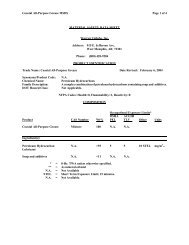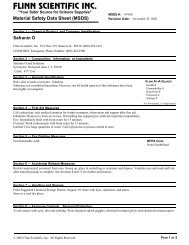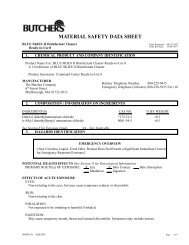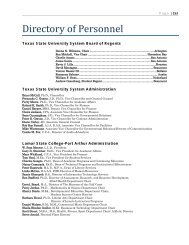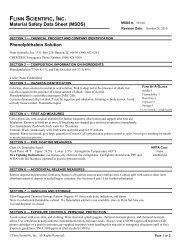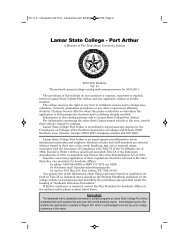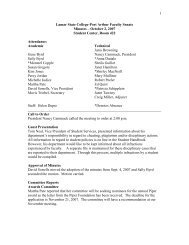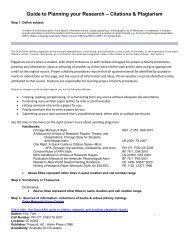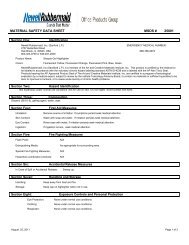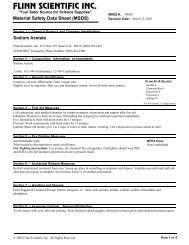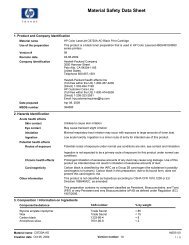Command Center 2 LOOK Glass Cleaner Concentrate.pdf
Command Center 2 LOOK Glass Cleaner Concentrate.pdf
Command Center 2 LOOK Glass Cleaner Concentrate.pdf
Create successful ePaper yourself
Turn your PDF publications into a flip-book with our unique Google optimized e-Paper software.
<strong>Command</strong> <strong>Center</strong> 2 <strong>LOOK</strong> <strong>Glass</strong> <strong>Cleaner</strong><strong>Concentrate</strong>MATERIAL SAFETY DATA SHEETDate Prepared: 07/29/1997Date Revised: 02/17/19981. CHEMICAL PRODUCT AND COMPANY IDENTIFICATIONProduct Name/Use: <strong>Command</strong> <strong>Center</strong> 2 <strong>LOOK</strong> <strong>Glass</strong> <strong>Cleaner</strong> <strong>Concentrate</strong>Product Synonyms: <strong>Command</strong> <strong>Center</strong> GLASS CLEANER <strong>Concentrate</strong> 2MANUFACTURERThe Butcher Company67 Forest StreetMarlborough, MA 01752-3012Butcher Telephone Number: 800-225-9475Emergency Telephone (24 hours): 800-228-5635 Ext 1182. COMPOSITION / INFORMATION ON INGREDIENTSINGREDIENT(S) CAS NO. % BY WEIGHT2-Butoxyethanol 111-76-2 25 – 40Propylene glycol monomethyl ether 107-98-2 5 – 7Alcohol ethoxy sulfate NA 5 – 7Ammonium hydroxide 1336-21-6 3 – 5Tetrasodium ethylenediamine tetraacetate 64-02-8 1 – 3Ethyl alcohol 64-17-5 0.25 –
<strong>Command</strong> <strong>Center</strong> 2 <strong>LOOK</strong> <strong>Glass</strong> <strong>Cleaner</strong><strong>Concentrate</strong>Date Prepared: 07/29/1997Date Revised: 02/17/1998INGESTION:May be harmful if swallowed. May cause mouth, throat and stomach irritation. Symptoms may include nausea,vomiting and diarrhea. May also cause central nervous system effects including headache, dizziness andweakness.EFFECTS OF CHRONIC EXPOSURE:Prolonged or repeated contact can cause defatting and drying of the skin which may result in skin irritation anddermatitis (rash). Prolonged inhalation of high concentrations of ammonia above exposure limits (see Section 8,Exposure Controls/Personal Protection) can cause respiratory tract effects including bronchitis, pneumonia andpulmonary edema.MEDICAL CONDITIONS AGGRAVATED:May aggravate pre-existing eye, skin and respiratory conditions.4. FIRST AID MEASURESEYES:Flush eyes with plenty of water while holding eyelids apart. After initial flushing, remove any contact lensesand continue flushing for at least 15 minutes. Do not put any medication in the victim’s eyes unless instructedby a physician. Get medical attention.SKIN:Flush with water, then wash with soap and water. Remove saturated clothing. Get medical attention if irritationdevelops.INHALATION:Remove to fresh air. If not breathing, give respiration; if breathing is difficult, give oxygen (by trained personnelonly). Get medical attention if symptoms persist.INGESTION:Do not induce vomiting. Drink large quantities of water. Get immediate medical attention. Never give anythingby mouth to an unconscious person.5. FIRE FIGHTING MEASURESFLASH POINT AND METHOD: 143°F 61.7°C TCCAUTOIGNITION TEMPERATURE: Not applicable.EXTINGUISHING MEDIA:Use water fog, dry chemical, CO2, or foam.HAZARDOUS COMBUSTION PRODUCTS:Normal products of combustion (carbon monoxide and carbon dioxide), nitrogen oxides, sulfur oxides, andammonia.MSDS No: 4117 Page: 2 of 7
<strong>Command</strong> <strong>Center</strong> 2 <strong>LOOK</strong> <strong>Glass</strong> <strong>Cleaner</strong><strong>Concentrate</strong>Date Prepared: 07/29/1997Date Revised: 02/17/1998FIRE AND EXPLOSION HAZARDS:Class IIIA combustible liquid. This product is combustible and may be ignited by heat, flames and other ignitionsources.FIRE FIGHTING INSTRUCTIONS:Evacuate area. Cool containers exposed to fire with water. MSHA/NIOSH approved self-contained breathingapparatus (SCBA) and full protective gear should be worn.6. ACCIDENTAL RELEASE MEASURESSee Section 8, Exposure Controls/Personal Protection and Section 3, Hazard Identification. Floors may be slippery.Use care to avoid falling. Remove ignition sources and ventilate spill area. Contain and isolate spill. Keepnon-essential personnel from entering spill area. Use mop, absorbent and non-sparking tools to collect materialfor proper disposal. Rinse area with water.7. HANDLING AND STORAGEHANDLING:Follow label use directions. Do not mix with other chemicals unless instructed by label directions. Loosenclosure cautiously before opening. Avoid contact with skin, eyes and clothing. Use with adequate ventilation.Avoid breathing vapor or mist. Use spark-proof tools. Wash thoroughly after handling. Remove contaminatedclothing. Wash clothing and equipment before reuse.STORAGE:Keep container closed when not in use. Store away from incompatible materials. (See Section 10, Stability andReactivity). Store away from direct sunlight. Keep away from heat, sparks and flame.8. EXPOSURE CONTROLS / PERSONAL PROTECTIONPERSONAL PROTECTIVE EQUIPMENT (PPE)EYE:Where eye contact is possible, wear safety glasses with side shields or chemical splash goggles (ANSI Z87.1approved).SKIN:Where prolonged or repeated contact is possible, chemical-resistant clothing (e.g., gloves) is recommended.RESPIRATORY:No respiratory protection is required if ventilation is adequate and airborne concentrations are kept below exposurelimits. When exposure limits may be exceeded, use appropriate respiratory protection (NIOSH)/MSHAapproved)to prevent overexposure.ENGINEERING CONTROLS:General room ventilation is expected to be adequate. If user operations generate vapor or mist, ventilation shouldbe used to keep airborne concentrations below exposure limits.MSDS No: 4117 Page: 3 of 7
<strong>Command</strong> <strong>Center</strong> 2 <strong>LOOK</strong> <strong>Glass</strong> <strong>Cleaner</strong><strong>Concentrate</strong>Date Prepared: 07/29/1997Date Revised: 02/17/1998EXPOSURE LIMITS:INGREDIENT(S) OSHA PEL/STEL ACGIH TLV/STEL2-Butoxyethanol25 ppm (120 mg/m3)/(Skin)25 ppm (121 mg/m3)/(Skin)Propylene glycol monomethyl ether 100 ppm (360 mg/m3)/150 ppm (540 mg/m3)100 ppm (369 mg/m3)/150 ppm (553 mg/m3)Alcohol ethoxy sulfate NE NEAmmonium hydroxide50 ppm (35 mg/m3)/(NH3)25 ppm (17 mg/m3)/35 ppm (24 mg/m3)(NH3)Tetrasodium ethylenediamine tetraacetate NE NEEthyl alcohol 1000 ppm 1000 ppmNE - Not Established9. PHYSICAL AND CHEMICAL PROPERTIESPHYSICAL STATE: LiquidODOR: Ammonia/SolventAPPEARANCE: Clear, BluepH: 10.7PERCENT VOLATILE BY WEIGHT: 93VAPOR PRESSURE: Not DeterminedVAPOR DENSITY: Not DeterminedBOILING POINT: Not DeterminedFREEZING/MELTING POINT: Not DeterminedSOLUBILITY IN WATER: CompleteEVAPORATION RATE: Not DeterminedSPECIFIC GRAVITY: 0.99VISCOSITY: Water ThinOCTANOL/WATER PARTITION COEFFICIENT: Not DeterminedODOR THRESHOLD: Not Determined10. STABILITY AND REACTIVITYSTABILITY (CONDITIONS TO AVOID):Stable.POLYMERIZATION:Will not occur.HAZARDOUS DECOMPOSITION:None.INCOMPATIBLE MATERIALS:Oxidizers, chlorine (e.g., bleach), strong acids (e.g. hydrochloric acid), strong bases (e.g., sodium hydroxide),and reactive metals (e.g., aluminum).MSDS No: 4117 Page: 4 of 7
<strong>Command</strong> <strong>Center</strong> 2 <strong>LOOK</strong> <strong>Glass</strong> <strong>Cleaner</strong><strong>Concentrate</strong>Date Prepared: 07/29/1997Date Revised: 02/17/199811. TOXICOLOGICAL INFORMATIONACUTE DATA:Based on testing of a similar product, this product may cause moderate to severe eye and mild skin irritation.It may be harmful if swallowed. It is not considered to be toxic by inhalation. The following data are availablefor product ingredients:PRODUCT/INGREDIENTORAL LD 50 (rat) DERMAL LD 50 (rabbit) INHALATION LC 50 (rat)2-Butoxyethanol 470 mg/kg 220 mg/kg 450 ppm (4-hr)Propylene glycol monomethyl ether 5660 mg/kg 13000 mg/kg 15000 ppm (4-hr)Alcohol ethoxy sulfate Not Available Not Available Not AvailableAmmonium hydroxide 350 mg/kg Not Available Not AvailableTetrasodium ethylenediamine tetraacetate 3030 mg/kg >5000 mg/kg Not AvailableEthyl alcohol 7060 mg/kg Not Available 31623 ppm (4-hr)SENSITIZATION DATA:No data available.CHRONIC DATA:Prolonged overexposure to ammonia by inhalation has caused respiratory tract effects in humans. Prolongedoverexposure to high concentrations of 2-butoxyethanol by skin absorption, ingestion and inhalation has causedblood, liver and kidney effects in laboratory animals. Prolonged overexposure to propylene glycol monomethylether by inhalation and ingestion has caused minor liver effects in laboratory animals; overexposure by dermalabsorption and ingestion has also caused minor kidney effects in laboratory animals.REPRODUCTIVE/TERATOGENIC DATA:Excessive and prolonged ingestion of ethyl alcohol has been found to cause reproductive and teratogenic effectsin humans and laboratory animals.CARCINOGENIC/MUTAGENIC DATA:Not listed as carcinogenic by NTP, IARC, or ACGIH or regulated as a carcinogen by OSHA.SYNERGISTIC MATERIALS:No data available.12. ECOLOGICAL INFORMATIONThis product is made with all biodegradable detergents. No other data available.13. DISPOSAL CONSIDERATIONSDisposal of this material should be in accordance with local, state or provincial and federal regulations. Theunused product, as manufactured, is a RCRA non-hazardous waste in accordance with 40 CFR 261. The producthas not been evaluated by the Toxicity Characteristic Leachate Procedure (TCLP). According to RCRA, it isthe responsibility of the waste generator to ensure proper disposal.MSDS No: 4117 Page: 5 of 7
<strong>Command</strong> <strong>Center</strong> 2 <strong>LOOK</strong> <strong>Glass</strong> <strong>Cleaner</strong><strong>Concentrate</strong>Date Prepared: 07/29/1997Date Revised: 02/17/199814. TRANSPORT INFORMATIONDOT/TDG HAZARDOUS MATERIAL DESCRIPTION: Not regulated15. REGULATORY INFORMATIONNot meant to be all-inclusive—selected regulations represented.UNITED STATESSARA TITLE III (SUPERFUND AMENDMENTS AND REAUTHORIZATION ACT)311/312 HAZARD CATEGORIES: Under 40 CFR 370.2, this product meets the following hazard categories:Immediate, Delayed, Fire.313 REPORTABLE INGREDIENTS: 2-Butoxyethanol is subject to the reporting requirements of Section 313of Title III of the Superfund Amendments and Reauthorization Act of 1986 and 40 CFR Part 372 under thechemical category Glycol Ethers.CERCLA (COMPREHENSIVE RESPONSE, COMPENSATION, AND LIABILITY ACT)CERCLA REGULATORY: Not reportable under CERCLA.TSCA (TOXIC SUBSTANCE CONTROL ACT)TSCA STATUS: This product complies with all TSCA inventory requirements.MASSACHUSETTS, NEW JERSEY, PENNSYLVANIA RIGHT-TO-KNOW:INGREDIENT(S) CAS NO. STATE LISTINGWater 7732-18-5 Not Listed2-Butoxyethanol 111-76-2 MA, NJ, PAPropylene glycol monomethyl ether 107-98-2 MA, NJ, PAAlcohol ethoxy sulfate NA Not ListedAmmonium hydroxide 1336-21-6 MA, NJ, PANA - Not ApplicableCANADAWHMIS (WORKPLACE HAZARDOUS MATERIALS INFORMATION SYSTEM):Class B-Division 3, combustible liquid; Class D-Division 2B, eye and skin irritant. This product has beenclassified in accordance with the hazard criteria of the Canadian Controlled Products Regulations (CPR) andthe MSDS contains all the information required by the CPR.MSDS No: 4117 Page: 6 of 7
<strong>Command</strong> <strong>Center</strong> 2 <strong>LOOK</strong> <strong>Glass</strong> <strong>Cleaner</strong><strong>Concentrate</strong>Date Prepared: 07/29/1997Date Revised: 02/17/199816. OTHER INFORMATIONHMIS RATINGHEALTH * 2FLAMMABILITY 2REACTIVITY 0PERSONAL PROTECTION -NFPA RATINGFIRE2HEALTH 2 0 REACTIVITY—SPECIALMSDS STATUSRevision #: 1This MSDS replaces the November 06, 1997 MSDS. Any changes in information are as follows:In Section 1MSDS NumberAPPROVED BY: EH&S/Regulatory AffairsAPPROVAL DATE: 02/17/1998The information on this data sheet represents our current data and best opinion as to the proper use in handlingof the product under normal foreseeable conditions. Any use of this product which is not in conformance withthis data sheet or product label, or which involves using the product in combination with any other product orany other process is the responsibility of the user.MSDS No: 4117 Page: 7 of 7



